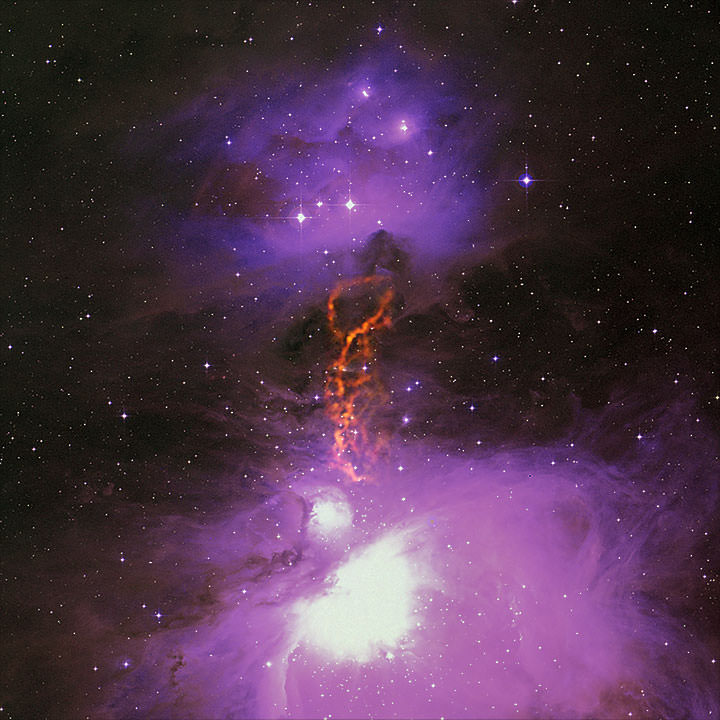Stars and planets form out of vast clouds of dust and gas. Small pockets in these clouds collapse under the pull of gravity. But as the pocket shrinks, it spins rapidly, with the outer region flattening into a disk.
Eventually the central pocket collapses enough that its high temperature and density allows it to ignite nuclear fusion, while in the turbulent disk, microscopic bits of dust glob together to form planets. Theories predict that a typical dust grain is similar in size to fine soot or sand.
In recent years, however, millimeter-size dust grains — 100 to 1,000 times larger than the dust grains expected — have been spotted around a few select stars and brown dwarfs, suggesting that these particles may be more abundant than previous thought. Now, observations of the Orion nebula show a new object that may also be brimming with these pebble-size grains.
The team used the National Science Foundation’s Green Bank Telescope to observe the northern portion of the Orion Molecular Cloud Complex, a star-forming region that spans hundreds of light-years. It contains long, dust-rich filaments, which are dotted with many dense cores. Some of the cores are just starting to coalesce, while others have already begun to form protostars.
Based on previous observations from the IRAM 30-meter radio telescope in Spain, the team expected to find a particular brightness to the dust emission. Instead, they found that it was much brighter.
“This means that the material in this region has different properties than would be expected for normal interstellar dust,” said Scott Schnee, from the National Radio Astronomy Observatory, in a press release. “In particular, since the particles are more efficient than expected at emitting at millimeter wavelengths, the grains are very likely to be at least a millimeter, and possibly as large as a centimeter across, or roughly the size of a small Lego-style building block.”
Such massive dust grains are hard to explain in any environment.
Around a star or a brown dwarf, it’s expected that drag forces cause large particles to lose kinetic energy and spiral in toward the star. This process should be relatively fast, but since planets are fairly common, many astronomers have put forth theories to explain how dust hangs around long enough to form planets. One such theory is the so-called dust trap: a mechanism that herds together large grains, keeping them from spiraling inward.
But these dust particles occur in a rather different environment. So the researchers propose two new intriguing theories for their origin.
The first is that the filaments themselves helped the dust grow to such colossal proportions. These regions, compared to molecular clouds in general, have lower temperatures, high densities, and lower velocities — all of which encourage grain growth.
The second is that the rocky particles originally grew inside a previous generation of cores or even protoplanetary disks. The material then escaped back into the surrounding molecular cloud.
This finding further challenges theories of how rocky, Earth-like planets form, suggesting that millimeter-size dust grains may jump-start planet formation and cause rocky planets to be much more common than previously thought.
The paper has been accepted for publication in the Monthly Notices of the Royal Astronomical Society.



